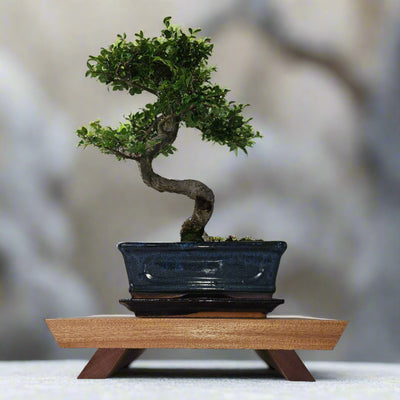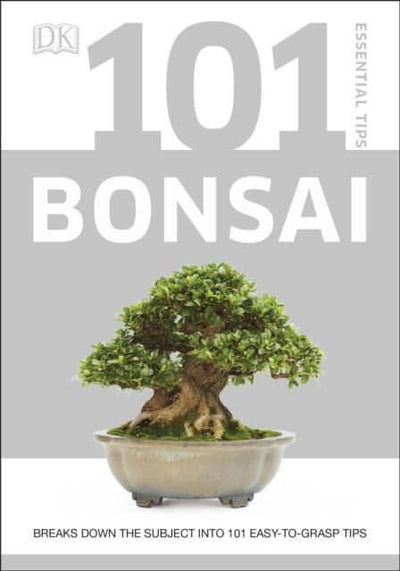50 facts about the ancient art of Bonsai Trees
The art of Bonsai originated in the Chinese Empire thousands of years ago. It is now practiced worldwide.
Here's 50 facts about the art of Bonsai.
- Bonsai is an ancient Japanese art form that involves growing miniature trees in containers.
- The word "bonsai" translates to "planted in a container" in Japanese.
- Bonsai trees are not genetically dwarfed plants; they are regular trees that are meticulously pruned and shaped to maintain their small size.
- Bonsai trees can live for hundreds of years if properly cared for.
- The oldest known bonsai tree is over 1,000 years old and is housed in the Urasenke tea house in Kyoto, Japan.
- Bonsai trees can be created from a variety of tree species, including both deciduous and evergreen trees.
- Common tree species used for bonsai include pine, maple, juniper, elm, and cherry.
- Bonsai trees require specific care and attention, including regular watering, pruning, and repotting.
- The art of bonsai requires patience and dedication, as it takes years to shape and train a tree into the desired form.
- Bonsai trees are often displayed in shallow containers called bonsai pots.
- Bonsai trees are considered living art forms and can be displayed both indoors and outdoors.
- Bonsai trees are traditionally associated with Zen Buddhism and are often used to evoke a sense of tranquility and contemplation.
- Bonsai trees are admired for their aesthetic beauty and the illusion of age and maturity they convey.
- Bonsai trees can be shaped into various styles, including formal upright, informal upright, slanting, cascading, and windswept.
- The size of a bonsai tree is measured by its height and the thickness of its trunk.
- Bonsai trees require a balance of sunlight and shade to thrive.
- Bonsai trees can be grown from seeds, cuttings, or by taking a mature tree and reducing it to a smaller size.
- Wiring is often used in bonsai cultivation to shape the branches and trunk into the desired position.
- Bonsai trees are susceptible to pests and diseases, so regular monitoring is essential.
- Bonsai trees undergo seasonal changes, such as leaf color change and fruiting, just like their full-sized counterparts.
- Bonsai trees are often displayed in formal exhibitions and competitions.
- The aesthetics of a bonsai tree are enhanced by the choice of an appropriate container, such as ceramic or clay pots.
- Bonsai trees require regular pruning to maintain their shape and promote healthy growth.
- The art of bonsai has spread beyond Japan and is now practiced worldwide.
- Bonsai trees are often given as gifts and are considered symbols of peace, harmony, and balance.
- The practice of bonsai dates back over a thousand years, with evidence of its existence in ancient China and Egypt.
- Bonsai trees are typically watered by immersing the entire pot in a container of water until the soil is thoroughly saturated.
- Bonsai trees can be susceptible to root rot if overwatered, so proper drainage is crucial.
- Bonsai trees can be styled to depict specific scenes or landscapes, such as mountains, forests, or even miniature replicas of famous landmarks.
- The aesthetic principles of bonsai emphasize asymmetry, simplicity, and balance.
- Bonsai trees can be shaped to mimic the effects of natural elements like wind, erosion, and aging.
- Bonsai trees require a period of dormancy during the winter months, during which their watering and fertilization are reduced.
- Bonsai trees can be trained to grow in different forms, such as clumps, multiple trunks, or group plantings.
- Bonsai trees require a well-draining soil mix specifically formulated for their needs.
- Bonsai trees are often displayed on small stands or tables to enhance their presentation.
- Bonsai trees can be trained to produce smaller leaves and finer branching through a process called defoliation.
- Bonsai trees are valued for their symbolism, with different tree species representing various virtues and qualities.
- Bonsai trees can be grown from seeds collected from the parent tree or obtained from specialized nurseries.
- Bonsai trees can be shaped using various tools, including shears, wire cutters, branch benders, and concave cutters.
- Bonsai trees can be grown from young saplings or nursery-grown trees and then trained into bonsai form over time.
- Bonsai trees require regular fertilization during the growing season to provide the necessary nutrients for healthy growth.
- Bonsai trees can be displayed individually or as part of a larger display called a bonsai forest.
- Bonsai trees are often placed in a position that mimics their natural environment, such as near water or under shade.
- Bonsai trees are not limited to traditional tree forms; they can also be created in more abstract and artistic shapes.
- Bonsai trees can be a lifelong hobby, as there is always something new to learn and explore in the art of bonsai.
- Bonsai trees can be enjoyed by people of all ages and can be a source of relaxation and stress relief.
- Bonsai trees can be purchased from specialized bonsai nurseries or grown from scratch by enthusiasts.
- Bonsai trees require periodic root pruning to prevent the roots from becoming pot-bound and to promote healthy growth.
- Bonsai trees should be protected from extreme weather conditions, such as frost or excessive heat.
- Bonsai trees are a unique form of living art that allows us to connect with nature on a miniature scale and appreciate the beauty and intricacy of the natural world.







